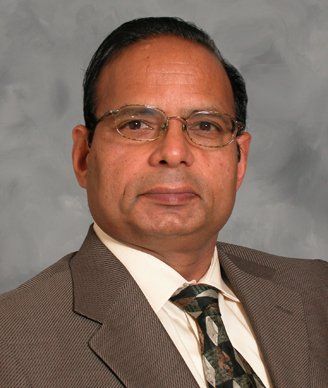Aldoxorubicin Shows Promise in Advanced Soft-Tissue Sarcoma
In this interview we discuss the phase III trial of aldoxorubicin in patients with advanced soft-tissue sarcoma, which showed improved efficacy and reduced toxicity over doxorubicin.
Sant P. Chawla, MD

As part of our coverage of the 2017 American Society of Clinical Oncology (ASCO) Annual Meeting, held June 2–6 in Chicago, we are joined by Sant P. Chawla, MD, a medical oncologist who specializes in the treatment of sarcoma at the Sarcoma Oncology Center in Southern California. At the ASCO meeting, Dr. Chawla presented results of a phase III clinical trial (abstract 11000) that compared aldoxorubicin to investigators’ choice of therapy for the treatment of relapsed or refractory soft-tissue sarcoma.
-Interviewed by Anna Azvolinsky
Cancer Network: First, Dr. Chawla, can you tell us about aldoxorubicin? What is its mechanism of action?
Dr. Chawla: Aldoxorubicin is classical doxorubicin. So doxorubicin as we all know was discovered in the 1970s and has the added complication of cardiac toxicity. There are a few anthracyclines that have been developed-and they may have been a little bit less cardiotoxic-but they still have cumulative cardiac toxicity and all of them are less effective.
Here, we took the classical doxorubicin and added a linker, and the linker attaches to albumin, which is taken up by the cancer cells. In the low pH-in the lysosomes-that linker disassociates from doxorubicin. And by this mechanism, we were able to give two to three times the amount of doxorubicin with each dose. So rather than the usual dose of doxorubicin-about 75 mg/m2-we were administering more than 200 mg/m2 of doxorubicin, in the form of aldoxorubicin.
Cancer Network: Can you tell us about the design of this phase III study?
Dr. Chawla: The design is a 433-patient study. One half of the patients were given aldoxorubicin at 350 mg/m2 per course, which is equivalent to about 250 mg/m2 of doxorubicin. The control arm was an investigators’ choice of therapy-one of five currently available chemotherapy regimens, which include pazopanib, doxorubicin, dacarbazine, gemcitabine/docetaxel, or ifosfamide. So, in this study, all patients had failed prior chemotherapy and could be given aldoxorubicin or one of these conventionally available chemotherapies.
Cancer Network: What are the important results and can you put these into context in terms of the currently available therapies for patients with soft-tissue sarcoma?
Dr. Chawla: As far as efficacy is concerned, the trial showed a superiority of progression-free survival in the total group, but the P-value was only .08, so it missed the significance level cut-off. But aldoxorubicin was significantly more effective in liposarcoma and leiomyosarcoma. Similarly, the objective response was almost double in the aldoxorubicin arm compared to the control arm. Progression-free survival at 4 months and 6 months was also superior in the aldoxorubicin arm. And so overall, there was a superior efficacy in the aldoxorubicin arm.
As far as cardiac toxicity, there was no dose-limiting cardiac toxicity in the aldoxorubicin arm when a doxorubicin equivalent dose of over 1,000 mg/m2 was administered. In the control arm, the only drug that we could compare cardiac toxicity with was doxorubicin, and the median dose there was only 300 mg/m2. In spite of that, the decrease in ejection fraction was below 50% in 3% of patients in the aldoxorubicin arm, but between 19% and 20% in the doxorubicin arm. That means that doxorubicin is more toxic, less effective, and you cannot give more than 500 mg/m2, while aldoxorubicin is more effective and has no cumulative cardiac toxicity.
Also, we were surprised that aldoxorubicin did not cause any hair loss. I don’t understand the mechanism, because doxorubicin should cause hair loss, but because of the linker attaching to the albumin it did not cause hair loss.
Cancer Network: What is next for this drug for the treatment of patients with sarcoma? Are there other studies that are ongoing or planned?
Dr. Chawla: This is a pivotal phase III study. The company will be submitting the data to the US Food and Drug Administration for approval under the provisional 505(b)(2) application, because this drug is less toxic and equally or more effective than doxorubicin.
We hope that the drug will be approved, and if it is approved, it will be for soft-tissue sarcoma. And then, it will hopefully replace all other indications where doxorubicin is used. Doxorubicin is widely used in breast cancer, ovarian cancer, lung cancer, all bone sarcomas, childhood tumors, and other indications. Doxorubicin is a very widely used drug. And hopefully, the cardiac toxicity will be eliminated. As far as this company is concerned, they are doing trials in small-cell lung cancer, and there is a combination study of ifosfamide and aldoxorubicin in sarcoma, which is ongoing right now.
Cancer Network: Thank you so much for joining us today, Dr. Chawla.
Dr. Chawla: Have a nice day!
Sarcoma Awareness Month 2023 with Brian Van Tine, MD, PhD
August 1st 2023Brian Van Tine, MD, PhD, speaks about several agents and combination regimens that are currently under investigation in the sarcoma space, and potential next steps in research including immunotherapies and vaccine-based treatments.